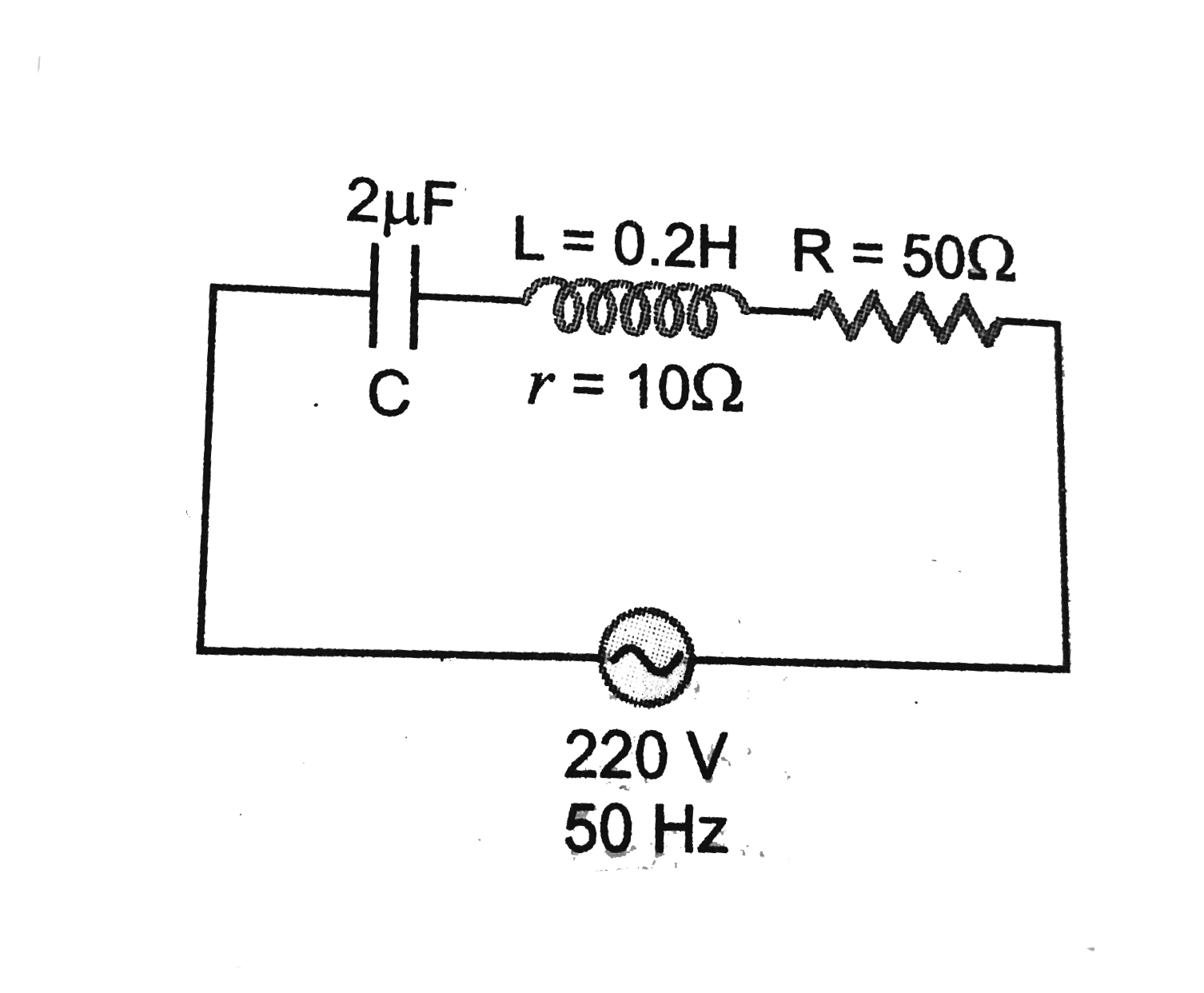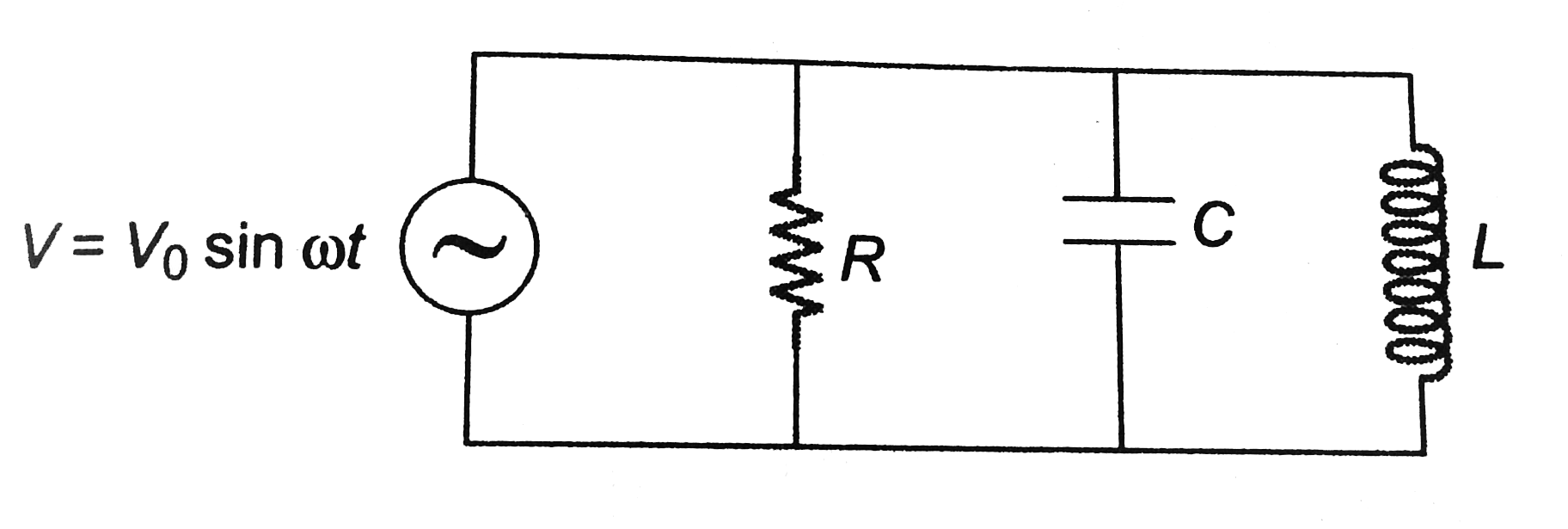(i) In series connection of two elements, the same current flows through each element
(ii) In parallel connection of two elements, the same potential difference gets applied across each element.
Both (i) and (ii) are correct.
(i) is wrong but (ii) is correct
(i) is correct but (ii) is wrong
Both (i) and (ii) are wrong.
The correct Answer is:A
To solve the question, we need to analyze the statements provided regarding series and parallel connections of electrical elements.
1. Understanding Series Connection:
- In a series connection, components are connected end-to-end, so there is only one path for the current to flow.
- Statement (i): "In series connection of two elements, the same current flows through each element."
- This statement is true because, in a series circuit, the current that flows through the first element must also flow through the second element, as there are no alternative paths.
2. Understanding Parallel Connection:
- In a parallel connection, components are connected across the same two points, creating multiple paths for the current to flow.
- Statement (ii): "In parallel connection of two elements, the same potential difference gets applied across each element."
- This statement is also true because, in a parallel circuit, each component is connected directly to the voltage source, meaning they all experience the same voltage.
3. Conclusion:
- Both statements (i) and (ii) are correct based on the principles of series and parallel circuits.
Final Answer:
- (i) True: In series connection of two elements, the same current flows through each element.
- (ii) True: In parallel connection of two elements, the same potential difference gets applied across each element.
- In a series connection, components are connected end-to-end, so there is only one path for the current to flow.
- Statement (i): "In series connection of two elements, the same current flows through each element."
- This statement is true because, in a series circuit, the current that flows through the first element must also flow through the second element, as there are no alternative paths.
- In a parallel connection, components are connected across the same two points, creating multiple paths for the current to flow.
- Statement (ii): "In parallel connection of two elements, the same potential difference gets applied across each element."
- This statement is also true because, in a parallel circuit, each component is connected directly to the voltage source, meaning they all experience the same voltage.
- Both statements (i) and (ii) are correct based on the principles of series and parallel circuits.
- (i) True: In series connection of two elements, the same current flows through each element.
- (ii) True: In parallel connection of two elements, the same potential difference gets applied across each element.
Topper's Solved these Questions
- SOURCES OF ELECTRIC CURRENTBOOK - CENGAGE PHYSICSCHAPTER - SOURCES OF ELECTRIC CURRENTEXERCISE - MANDATORY EXERCISE (Exercise Set III)
1 Video
- SOURCES OF ELECTRIC CURRENTBOOK - CENGAGE PHYSICSCHAPTER - SOURCES OF ELECTRIC CURRENTEXERCISE - MANDATORY EXERCISE (Exercise Set IV)
9 Videos
- SOURCES OF ELECTRIC CURRENTBOOK - CENGAGE PHYSICSCHAPTER - SOURCES OF ELECTRIC CURRENTEXERCISE - MANDATORY EXERCISE (Exercise Set I)
4 Videos
- REFRACTION OF LIGHT BOOK - CENGAGE PHYSICSCHAPTER - REFRACTION OF LIGHT EXERCISE - OLYMPIAD AND NSE LEVEL EXCERCISES
10 Videos
- STATIC ELECTRICITYBOOK - CENGAGE PHYSICSCHAPTER - STATIC ELECTRICITYEXERCISE - OLYMPIAD AND NTSE LEVEL EXERCISES
10 Videos
Similar Questions
Knowledge Check
Consider the following statements:( A ) In series connection, the same current flows through each element.
B. In parallel connection, the same potential difference is applied across each element.Aboth A and B are correctBA is correct but B is wrongCA is wrong but B is correctDboth A and B are wrongIsodiapheres are the atoms of two elements having same values of:
Ap/nB(p-n)C(n - p)Dn×pAll elements of an circuit are connected in series except
AvoltmeterBammeterCrheostatDresistor
Experimentally prove that in series combination of three resistances:
(a) Current flowing through each resistance is same , and
(b) total potential difference is equal to the sum of potential differences across individual resistors.
View SolutionTwo wires A and B are of same metal, have the same area of cross-section and have their lengths in the ratio 2:1. What will be the ratio of currents flowing through them respectively when the same potential difference is applied across the length of each of them ?
View SolutionAtoms of different elements have the same mass .
View SolutionIn the circuit shown in Fig. calculate
(i) current in the circuit
(ii) Potential difference across each element.

View SolutionFor the circuit shown in figureure, find the instaneous current through each element.
 .
.
View Solution
